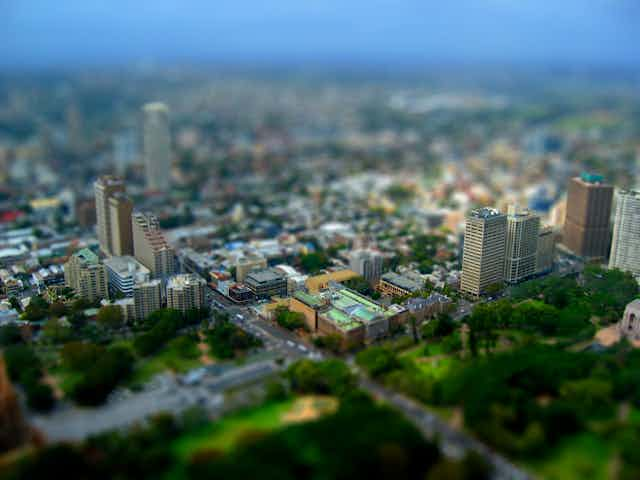Making Australian cities truly resilient to extreme events is being held back by archaic planning. The majority of buildings don’t fall under new sustainability and resilience regulations, meaning private initiatives have to pick up the slack. It might sound trivial, but more resilient buildings could have prevented losses during events such as Queensland’s devastating 2011 floods.
Recently the journal Urban Policy and Research published a remarkable issue. It featured opinion pieces on the state of Australian cities and their future by Anthony Albanese (MP), Greg Hunt (Environment Minister), Scott Ludlum (Senator) and Kirsty Kelly (CEO, Planning Institute of Australia).
They stated that Australian cities need to become more sustainable, more liveable, and more resilient over the coming decades.
The broader discussion on the strength of Australian cities to date is constructive and points in the right direction. But the proposals on the table have two latent defects. One is an unwillingness to tackle the issue of “grandfathering” existing buildings into new regulation. The other is an over-reliance on collaboration between government, businesses and citizen groups.
The problem of grandfathering
Around the globe the traditional approach to strengthening cities is by introducing new regulation. In Australia this is evidenced by the ratcheting up of the National Construction Code. There is however a major problem that new regulations cannot address.
Existing buildings are normally exempted from new regulations. This process is referred to as grandfathering. Existing buildings make up the majority of buildings in a city (about 98%), and they are replaced very slowly (about 1% year). Grandfathering in effect allows for the maintenance of weak links in achieving truly sustainable, liveable and resilient cities.
This problem of grandfathering has been picked-up by, among others, the Australian Resilience Taskforce. It claims that much financial harm and possibly even casualties could have been prevented from the Queensland floods (2010/2011) if only existing buildings had been more resilient (read: if they had complied with current-day building regulation).
Similar issues come to the fore in discussions about the devastation caused by hurricane Sandy that hit New York in 2012.
Overcoming the weak link
All over the world citizen groups, businesses and governments seek to overcome this weak link in urban sustainability, liveability and resilience. In Australia they are particularly active in doing so. Below are some of the most impressive efforts.
In 2010, owners of Sydney-based apartment units came together. They wanted to install solar panels on their existing strata-buildings to reduce their electricity bills, but Australian law stood in their way for doing so.
They started Green Strata and brought their problem to the attention of the City of Sydney. The City provided them with a small grant. This has helped Green Strata to grow out to an internationally recognised organisation that provides a wealth of information to strata-owners.
They have shown that strata-buildings can save more than 80% of their communal energy consumption, which significantly reduces the energy bill as well as carbon emissions.
In 2003, Green Star was launched by leaders in the construction industry. They wanted to show their buildings outperform others in terms of sustainability.
To give insight into the relative performance of a building they developed a labelling scheme. For instance, a six-star rated building shows that it outperforms a three-star one. Now, building tenants are willing to pay higher rents for buildings with positive labels, especially for commercial buildings.
Green Star has achieved considerable success in improving the sustainability of new commercial buildings in Australia, with 7.2 million square metres already labelled. Green Star is now moving into the market for existing buildings.
In terms of government, the City of Sydney started the Better Buildings Partnership in 2011, seeking to reduce the carbon emissions of Sydney’s 14 major property owners’ existing buildings. Together these produce about 25% of Sydney’s emissions, mostly due to energy inefficiency.
As a result of being informed on energy efficiency by the City of Sydney and by sharing information among each other, these 14 property owners have saved $25 million on their energy bills, and reduced emission of up to 70%.
Strong cities through collaboration?
In the above examples, and in many others, “collaboration” is the key-word in how citizen groups, businesses and governments seek to address the weak link in urban sustainability, liveability and resilience. But is collaboration enough?
My international research shows it is not, and shows that there is an over-reliance on collaboration. I see two shortcomings in collaboration for stronger cities.
First, they are often small innovations in a predominantly conservative industry. Action is needed to scale up these initiatives.
Second, they are isolated pockets of sustainability, liveability and resilience. Linking them could make the whole greater than the sum of its parts. Regulation and coordination may be required.
Here I see a role for government unaddressed in Australia’s National Urban Policy. Government should support and link local collaborations, draw lessons from these and communicate those, and replicate best practices throughout the nation.
Yet, to achieve truly strong cities we need to stop grandfathering existing buildings and make them subject to current-day regulations. The collaborations show that the future-proofing of existing buildings saves costs.
When disaster strikes, it may save lives as well.

